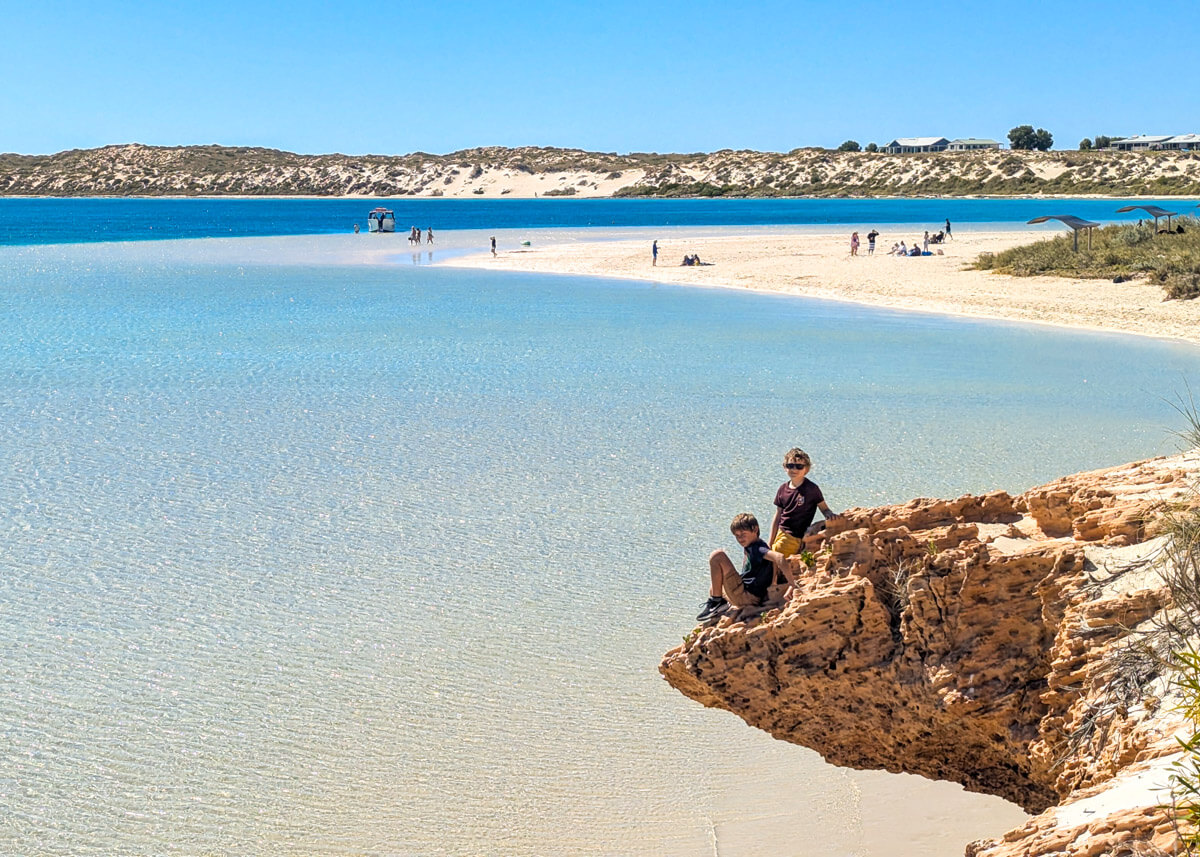Most visitors to Coral Bay in Western Australia join some kind of tour, whether that’s whale, shark, manta ray, or snorkelling. But what happens if you buck the trend stay independent? With tours costing a small fortune (and often available more cheaply elsewhere in the world), we explore whether Coral Bay still delivers for families who prefer to hang out on shore.
From the moment you enter Coral Bay, it’s clear that this place is setup for tours and tourists. With holiday parks, supermarkets, tour shops and restaurants lining the main road, the vibe comes as a jolt to the senses after driving along the desolate road that leads here. Although many domestic tourists come here to explore the Ningaloo Reef area in their own boats, plenty of other tourists swarm into town and soon book themselves onto a tour.
Tours are big business and are exceedingly popular and expensive, whether you choose to stay on land and ride quad bikes and beach buggies, or take to the water to snorkel, dive, or spot whales, sharks and mantra rays. If you’re in Coral Bay during peak season (July and August), many of these tours are booked up weeks in advance, despite often costing in excess of A$1000 for a family of four.
During our visit, we decided to take a step back from the crowds, shun the overpriced tours and find our own rhythm. Although the brochures promised once in a lifetime experiences, we knew similar tours existed elsewhere in the world for a fraction of the price and hassle. Plus, winter really wasn’t the time to be in or on the water for too long, with cold temperatures and near-constant winds.
Staying at People’s Park
One of two main campsites in Coral Bay (a third is under construction and creating quite the eyesore), People’s Park is a well-organised place popular with domestic tourists with large boats. Many people return here year on year and it’s easy to see why.
Some of the pitches can be on the small side but we were pleasantly surprised with the large grassy pitch we were allocated, close to the camp kitchen and one of the toilets (the main ablution block was only a couple of minutes walk away).

This was one of the better campsites we stayed in during our six-week WA road trip. The camp kitchen was well-stocked with fridge, freezer, sink, hobs, oven, toaster, kettle and TV area. It was a lovely retreat from the wind and cold most evenings, aside from one night when an Australian family took over and seemed to think they were in their local RSL.
Elsewhere on the site, there’s a playground, launderette, small supermarket, cafe and restaurant. Despite its proximity to the coastline, the sites are well protected from the wind and our tents felt quite secure during our stay.
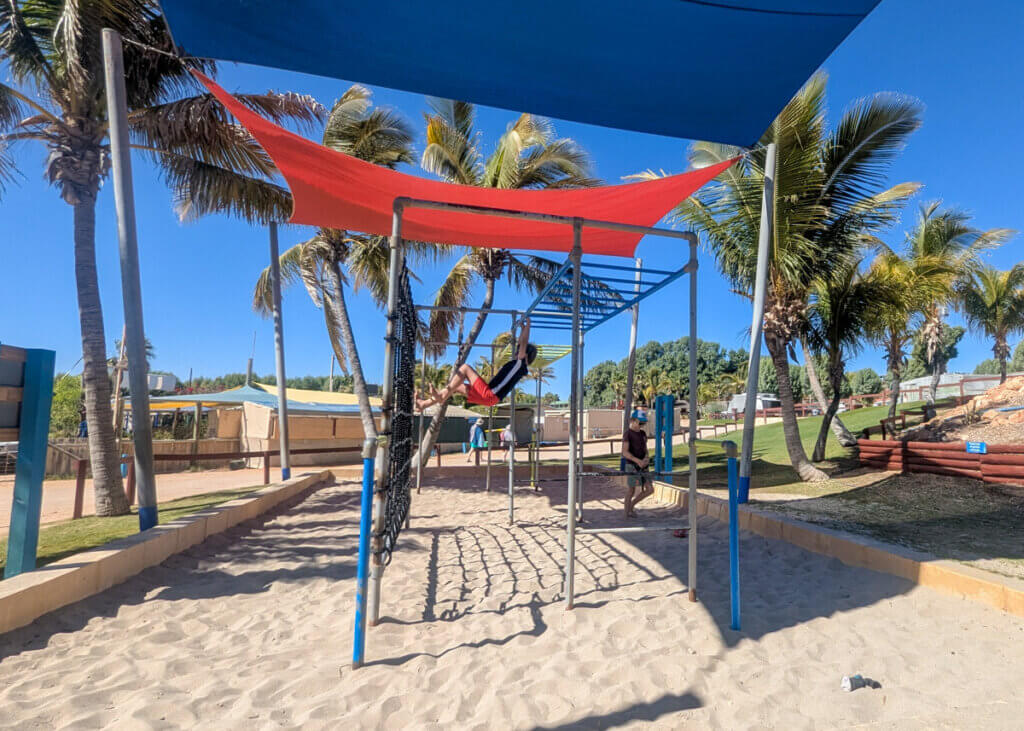
The under-construction campsite next door wasn’t too much of a noise nuisance, although the building works do mean some of the walking trails that were once there have gone. Instead, it was just a gentle ten minute stroll from our tent to either the beach or main shopping area of Coral Bay.
What to expect at Coral Bay
Coral Bay is basically one large resort village, spread along a few hundred metres of land either side of the main road. Heading into town, there’s a retail and entertainment complex on the right, housing the main supermarket, cafes, a pub and several tour agencies. On the left are the two holiday parks / campsites (Ningaloo Coral Bay and People’s Park), with the beach and grassy areas towards the end on the right hand side. RAC Ningaloo Reef Resort was being built at the far end when we visited.
It’s not the most appealing of entrances in peak season, with lots of cars parked up, people milling around, and caravans squeezed right up to the edge of the road of the two campsite. It feels busy and a bit chaotic.
But once you step back from the holiday parks and shops, there’s plenty to keep you occupied away from the crowds and tour groups.
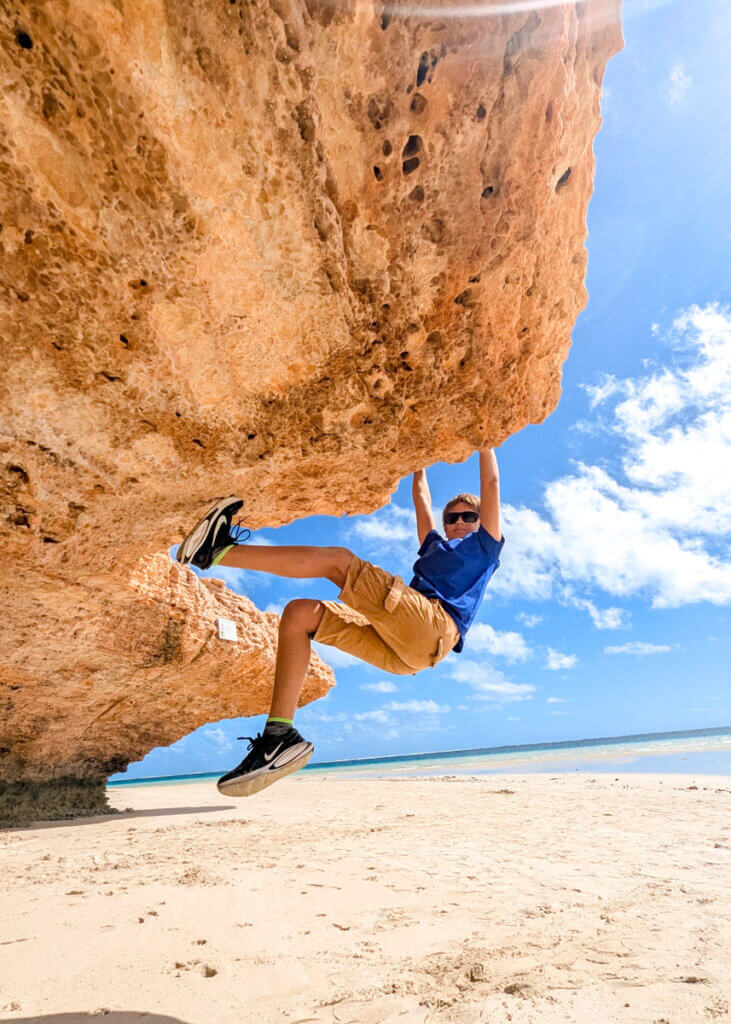
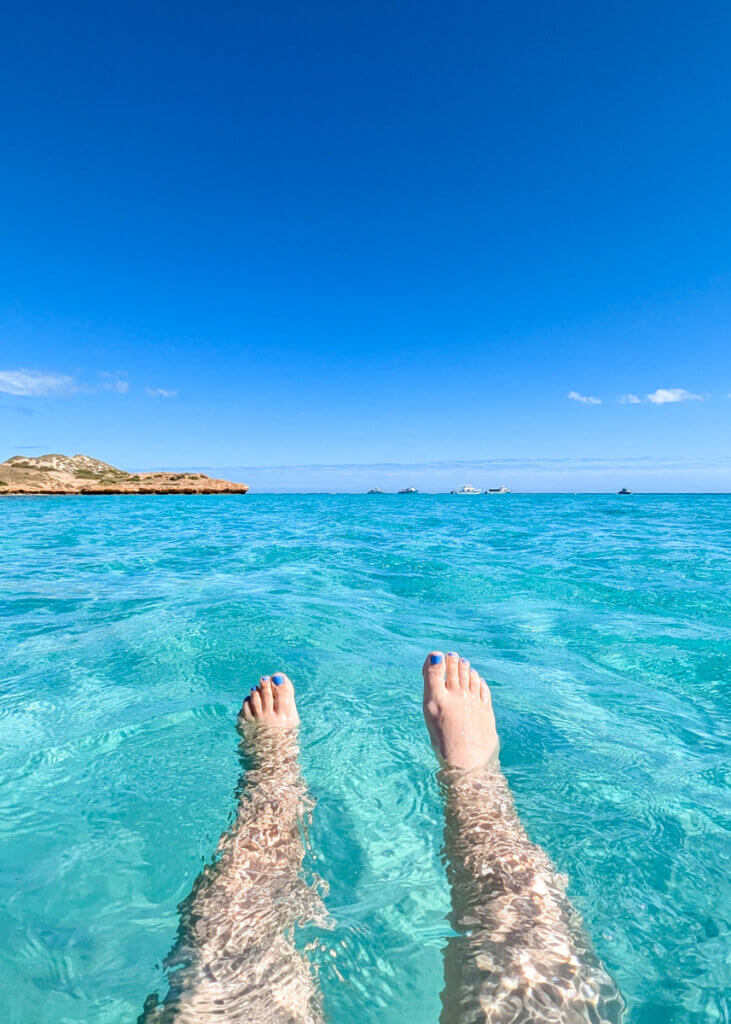
What to do if not doing any tours?
We had six days in Coral Bay which, after exploring our new surroundings for a few hours, felt too much time. Although we were still content with our decision to avoid the water-based tours (those white-capped waves and cold waters did not look conducive to snorkelling or whale-watching), we did worry how to fill the time.
But then Coral Bay began to work is charms on us. We embraced the slower pace of life which camping naturally brings, and our daytime routine took shape around lazy mornings, afternoon strolls, an occasional dip in the sea, late afternoon pizza and beers, before heading to the almost-deserted beach to watch the sun set.
1. Snorkel from the beach
Ironically, during the peak season in Coral Bay (July and August), the seawater is cold and very few people venture into the water, and those that do tend to only stay for a few minutes. It’s much more bearable in a wetsuit and it’s just possible to snorkel.
If you brave it, you’ll be greatly rewarded with tropical fish, golden sand and almost entirely transparent waters. Do keep an eye out for stingrays, they also seem to enjoy Coral Bay’s waters.

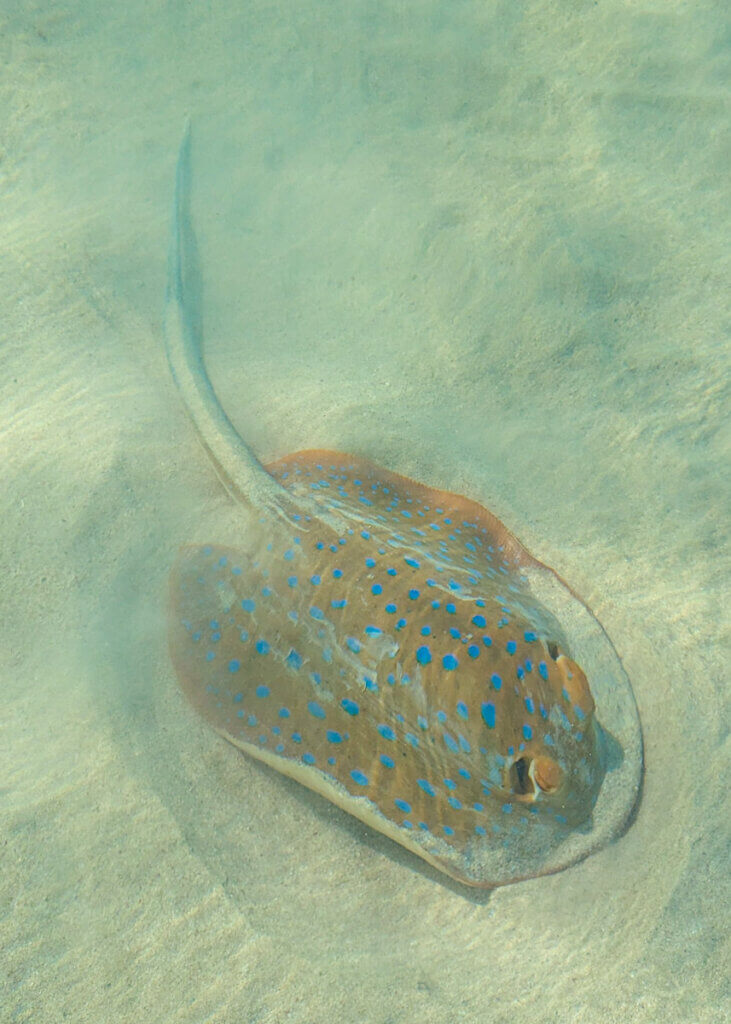
2. Play on the sand dunes
The construction work at the RAC resort has a small impact, but once you reach the top of the sand dunes and gaze out onto the turquoise waters of the Indian Ocean, live feels good. Adults and kids alike will enjoy exploring the dunes, although do be wary of some exposed cliff edges.
At most times of the day, you can venture down onto the shoreline and walk back around to the main beach, perhaps stopping at a few caves for relaxation and exploration. When the tide is in it’s possible to wade through, it’s not too deep.
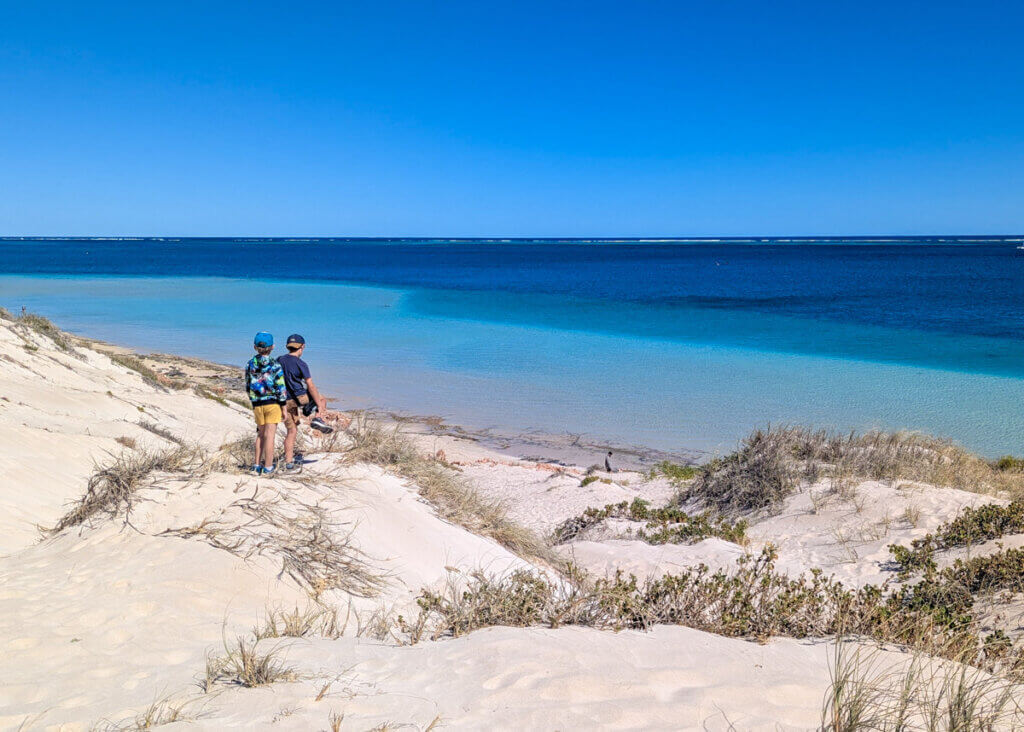
3. Watch epic sunsets
Facing due west, Coral Bay is home to some of the best sunsets in WA. In spite of the hoards of tourists here, the beach is remarkably quiet at sunset, all the better for those who make the effort. Pick up a cold drink from the supermarket and find your own little patch of paradise.
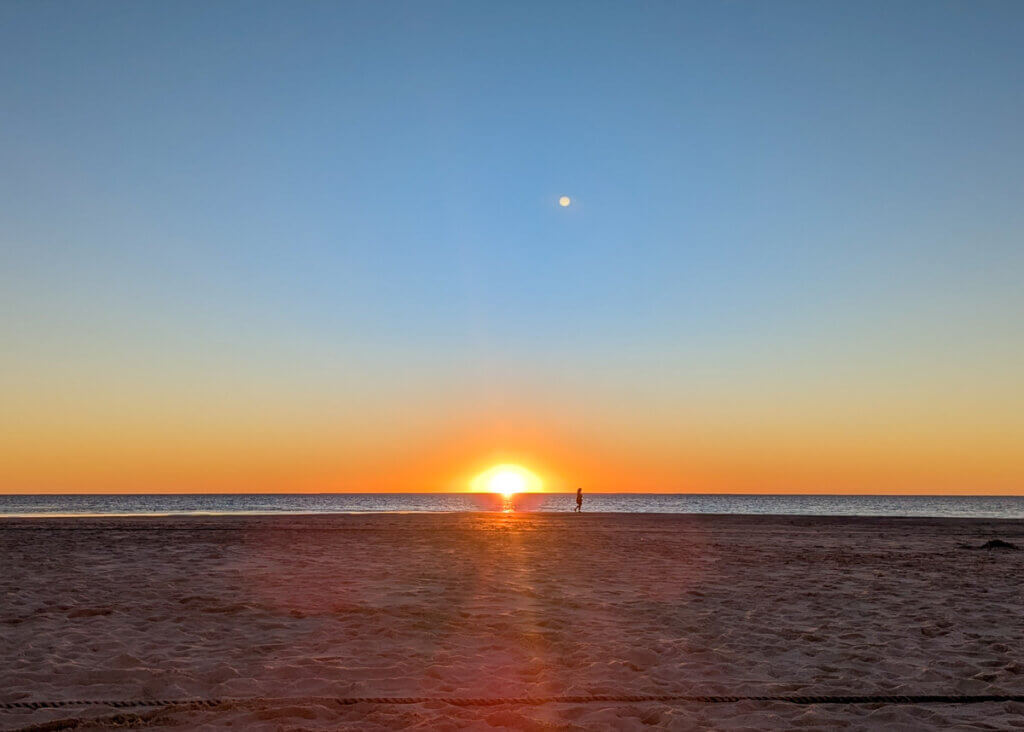
4. Visit nearby beaches
Assuming you have your own transport, there are a couple of beaches within a few minutes drive that nicely break up the days and let you see another side of Coral Bay. These are both accessible with 2WD.
Our favourite was Mauds Landing, located an easy ten minute drive from Coral Bay along a decent unsealed road. It might just be one of the most impressive stretches of coastline in WA, with an endless sweep of sand heading north towards Ningaloo.
Remarkably, you’ll probably have it to yourself, even in high season. Remember to bring the sunscreen as there’s no shade, plus any supplies you’ll need from Coral Bay, as there are no shops either.
Another option is Paradise Beach, closer to town and one of the main boat ramps, it feels a lot busier than Mauds Landing, but the water is crystal clear and begging to be enjoyed.

5. Rent a kayak
If you find a calm weather day (not always easy in these parts), the waters around Coral Bay are perfect for some gentle kayaking, although remember to take note of the strong currents.
There are a few places in town to rent kayaks but the easiest place is at Ningaloo Kayak Adventures, right on the water’s edge. Here you can rent kayaks, canoes or SUPs: expect to pay around A$30 per hour for a single kayak, A$50 for a double one.
6. Eat pizza at the Reef Cafe
The mid to late afternoons in Coral Bay are ideal for a beer and pizza break, and we found the perfect place at the Reef Cafe, especially after 4.00pm when the Happy Hour kicks in. It’s a very sociable place, popular with the locals, tourists and European seasonal workers.
Excellent pizzas are a speciality and they have plenty of beers on tap and wine to choose from. Handily placed outside the Ningaloo Coral Bay campsite, it’s only a short walk to the beach for sunset and sundowners.
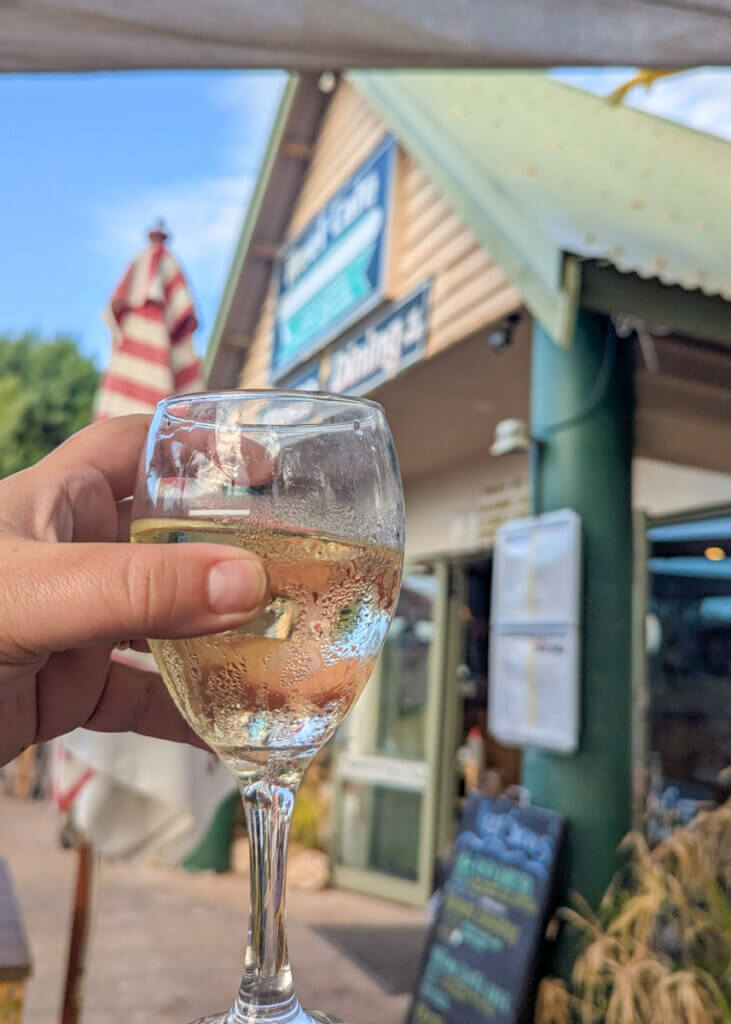
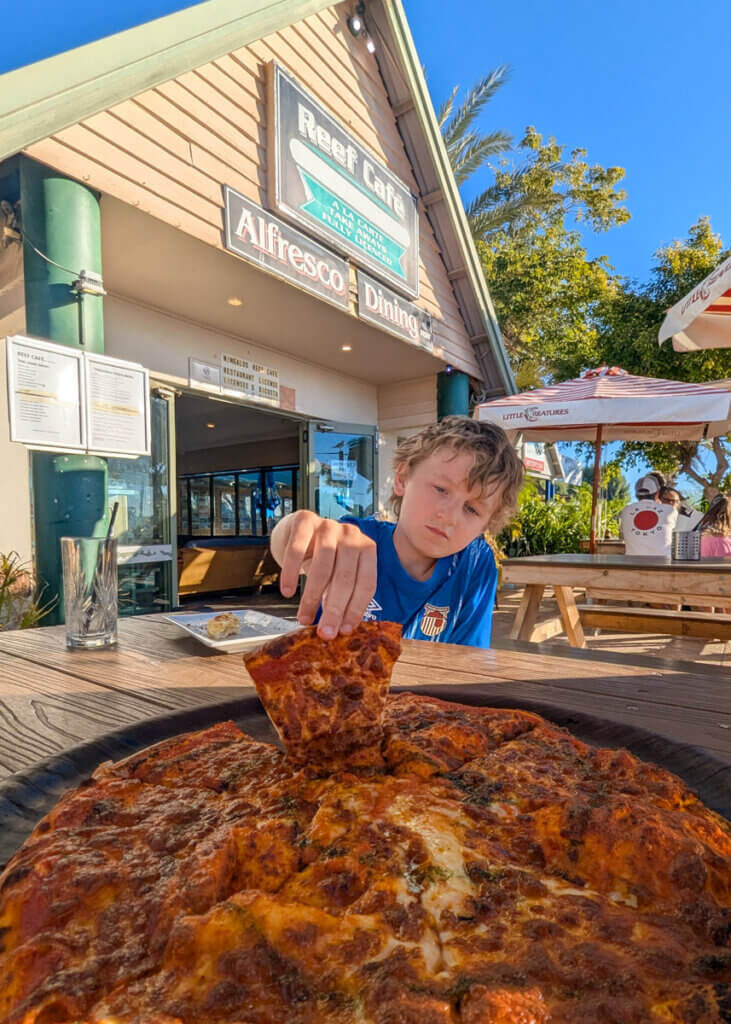
Final thoughts
During the high season, Coral Bay is a busy place with a wide range of expensive tours on offer. By most other country’s standards, Australia is a pricy place to travel, but it really stands out here, where a half-day excursion on the water can easily set a travelling family back A$1,000 (£500). And, as these are natural experiences, no sightings are guaranteed.
If like us, these prices feel too high to you, rest assured that Coral Bay also rewards a more pared-down visit. With several deserted beaches to choose from a short drive away, plus free activities in the town itself, you can safely skip the tours, slow down for a few days and enjoy the natural beauty of this stunning stretch of coastline.
You may also like to read:
Cheela Plains Station: wilderness camping in Western Australia
What is the best age to travel with kids?
24 road trip essentials with kids

